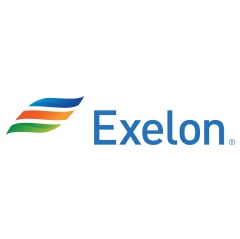Exelon Generation and State of Maryland Reach Agreement to Restore and Sustain Chesapeake Bay
Historic agreement on the Conowingo Dam is a win for the environment, the economy, the State of Maryland and the entire Chesapeake Bay region
Today, Exelon Generation announced that it has reached an historic settlement agreement with the State of Maryland that will protect the long-term health of the Chesapeake Bay and preserve Marylandís largest source of renewable energy, the Conowingo Dam. The benefits to Maryland and the Chesapeake Bay are valued at more than $200 million over the anticipated 50-year life of the license, which will be funded from the damís earnings over that time period.†
The agreement, which must be approved by the Federal Energy Regulatory Commission, is a critical step for Chesapeake Bay restoration efforts and provides for significant contributions to protect and enhance the health of the bay, including improving water quality, fish and eel passage, marine habitats, and debris removal. The comprehensive agreement will also provide for the continued production of carbon-free energy from the dam, which is vital to support Governor Larry Hoganís Clean and Renewable Energy Standard of 100 percent clean electricity by 2040, as well as deliver economic, recreational, tourism and community benefits. The agreement resolves all outstanding issues arising from the Maryland Department of the Environment water quality certificate.
ďExelon Generation and the State of Maryland share a commitment to restoring and sustaining the health of the Chesapeake Bay, which has been strengthened by this agreement,Ē said Chris Crane, president and CEO of Exelon. ďThis is a victory for clean energy and the long-term preservation of the Chesapeake Bay. The agreement is designed to substantially improve water quality while ensuring Marylandís largest source of renewable energy continues to deliver environmental and economic benefits for the next generation.Ē
The dam powers approximately 165,000 homes in the region. Its operation does not produce any pollution and is a significant contributor to combatting climate change. It also provides tremendous economic benefits to the region, generating $273 million in economic activity and supporting 265 full-time equivalent jobs. The recreational resources associated with the dam receive 365,000 visits per year, contributing to Cecil and Harford Countiesí 2018 tourism tax revenue of $21.7 million.†
Highlights of the comprehensive agreement follow.†
Restoration and Protection of the Chesapeake Bay†
- A contribution of Exelon lands and more than $25 million in funding to support the construction, operations, and maintenance of a mussel hatchery along the banks of the Susquehanna River. Mussels from this hatchery when stocked into the Susquehanna River basin will filter nutrients and sediment before they reach the Bay. This natural improvement in water quality will be further enhanced by increasing passage of an important mussel host species, American eel, at Conowingo Dam.
- More than $19 million of funding support for Maryland to invest in water quality improvement projects, including forest buffers and agricultural projects such as cover crops to reduce nutrient pollution.
- More than $12 million to Maryland to support staff resources for oversight and protection of the Chesapeake Bay.
- $5 million for chlorophyll A monitoring and reporting.
- $500,000 to fund a feasibility study of dredge material disposal options in and around the Conowingo pond.†
Enhanced Debris Management
- Continued commitments valued at $41 million to address debris accumulation, including an engineering study examining additional methods to divert debris before it reaches the dam, and employment of clamming, skimming, or other equally effective means of debris removal.
Enhanced Habitat and Fish Passage Improvements
- $11 million of improvements to eel passage that will help facilitate mussel restoration with its benefits to nutrient reductions, plus a contribution of $1 million to fund eel passage research.†
- More than $47 million in funding for climate resiliency projects, including submerged aquatic vegetation, aquaculture, clam and oyster restoration projects, and living shoreline creation to help make the Susquehanna River and Chesapeake Bay more resilient to severe weather events.††
- Modifications to river flow valued at $52 million to enhance habitat for aquatic species like American shad and river herring, that reside downstream of the dam, and submerged aquatic vegetation, which trap sediment, remove pollution and serve as a vital habitat to spawning and rearing fish.
( Press Release Image: https://photos.webwire.com/prmedia/5/249188/249188-1.png )
WebWireID249188
This news content was configured by WebWire editorial staff. Linking is permitted.
News Release Distribution and Press Release Distribution Services Provided by WebWire.
